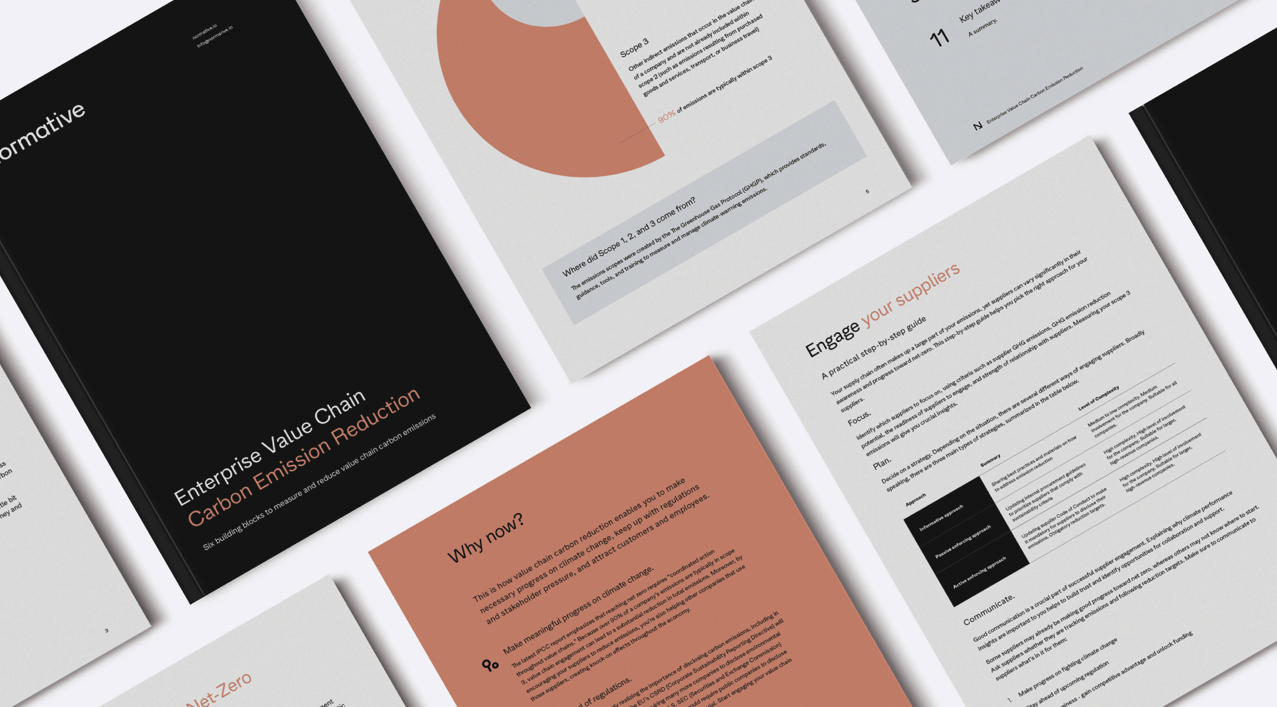How to reduce supplier carbon emissions
You can help your suppliers reduce their emissions – and your own carbon footprint.
For most businesses, around 90% of total emissions occur in the value chain – a large portion of which come from suppliers.
This five-step checklist from our guide to enterprise value chain engagement will help you pick the right approach to engaging your suppliers.
1. Focus
Identify which suppliers to focus on, using criteria such as supplier GHG emissions, GHG emission reduction potential, the readiness of suppliers to engage, and strength of relationship with suppliers. Measuring your scope 3 emissions will give you crucial insights.
2. Plan
Decide on a strategy. Depending on the situation, there are several different ways of engaging suppliers. Broadly speaking, there are three main types of strategies. These are summarized in the table below:
| Approach | Summary | Level of Complexity |
|---|---|---|
| Informative approach | Sharing best practices and materials on how to address emission reduction | Medium to low complexity. Medium involvement for the company. Suitable for all companies. |
| Passive enforcing approach | Updating internal procurement guidelines to prioritize suppliers that comply with sustainability criteria | High complexity. High level of involvement for the company. Suitable for larger, high-revenue companies. |
| Active enforcing approach | Updating supplier Code of Conduct to make it mandatory for suppliers to disclose their emissions. Obligatory reduction targets. | High complexity. High level of involvement for the company. Suitable for larger, high-revenue companies. |
3. Communicate
Good communication is a crucial part of successful supplier engagement. Explaining why climate performance insights are important to you helps to build trust and identify opportunities for collaboration and support.
Some suppliers may already be making progress toward net zero, whereas others may not know where to start. Ask suppliers whether they are tracking emissions and following reduction targets. Make sure to communicate to suppliers what’s in it for them:
4. Encourage
For suppliers that are still in the early stages and lack the know-how, consider running information-sharing sessions such as webinars. Point suppliers toward third-party services that can help them get started, like the free-to-use Business Carbon Calculator.
You can use different ways of encouraging suppliers to track and reduce emissions. For example, you can have a supplier recognition program. Additionally, you can work closely with your procurement team to prioritize low-emission suppliers or impose certain sustainability requirements on suppliers.
5. Monitor
Net zero is an ongoing process. Make sure to follow up with suppliers at least yearly.
Reach out to Normative experts to learn more about engaging the value chain to reduce emissions here.


